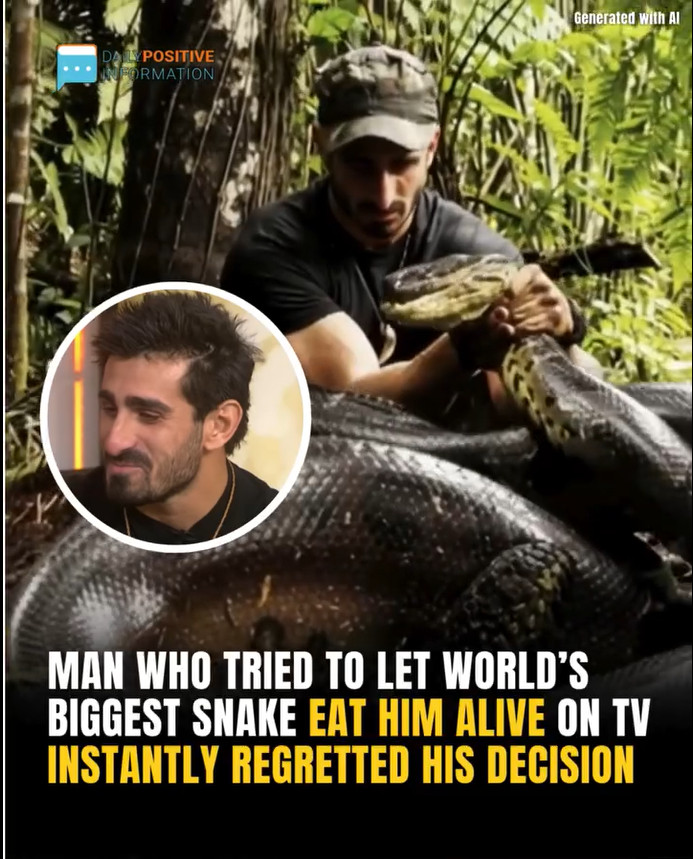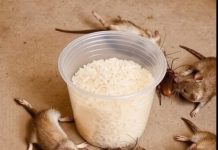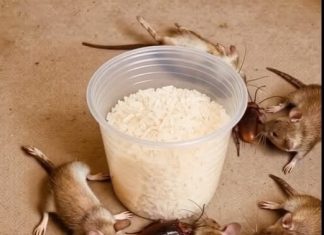The Daring Stunt of Paul Rosolie: A Quest for Amazonian Awareness
In 2014, the world was captivated by an extraordinary event that blurred the lines between audacity and conservation. Conservationist and adventurer Paul Rosolie undertook a perilous stunt that aimed to shed light on a critical environmental issue: the destruction of the Amazon rainforest. As the world’s largest tropical rainforest, the Amazon is not only essential for global biodiversity but also plays a crucial role in regulating the Earth’s climate. Rosolie’s attempt to be eaten alive by a giant green anaconda sparked widespread debate and drew attention to the urgent need for environmental awareness.
Rosolie’s venture was not without its risks. He donned a specially engineered carbon fiber suit designed to withstand the immense pressure exerted by the anaconda’s powerful coils. This suit was equipped with built-in cameras, allowing viewers to witness the event as it unfolded, and an oxygen supply to ensure he could breathe while inside the snake. Such innovations highlighted the lengths to which Rosolie was willing to go to engage with his audience and raise awareness about the threats facing the Amazon rainforest. The striking visuals and suspenseful nature of the project were intended to engage a broad audience, making them acutely aware of the rainforest’s plight and the threats it faces from deforestation, illegal logging, and climate change.
The Event That Shook Viewers
The stunt was filmed for a special titled Eaten Alive, broadcast on the Discovery Channel. The program aimed to create an immersive experience, placing viewers right in the heart of the Amazon while tackling a grave topic. As Rosolie provoked the anaconda to strike, emotions ran high both for him and for those watching at home. The dramatic tension built as he prepared to enter the enormous snake, symbolizing not just a personal risk but also the greater risk faced by the Amazon rainforest itself. This interaction with a creature so often shrouded in mystery and fear forced viewers to confront their own perceptions of the natural world.
While the event succeeded in garnering attention, it also faced significant criticism from various quarters. Many conservationists argued that the stunt trivialized the serious issues surrounding wildlife conservation and environmental degradation. Critics feared that the sensationalism could overshadow the real message, which was to highlight the rapid destruction of one of the planet’s most vital ecosystems. Notably, organizations like Greenpeace and the Rainforest Foundation voiced their concerns, emphasizing that true conservation requires respectful and sustainable engagement with nature, rather than exploitative spectacles. This dichotomy between entertainment and education raises important questions about the best ways to engage the public in environmental issues. How can we capture attention without sacrificing the gravity of the message we wish to convey?
The Amazon Rainforest: A Critical Ecosystem
The Amazon rainforest, often referred to as the “lungs of the Earth,” is home to approximately 10% of the known species on the planet. It produces 20% of the world’s oxygen and is a key factor in regulating the Earth’s climate. However, this unparalleled ecological treasure is under siege, with deforestation rates rising alarmingly. Agricultural expansion, logging, and mining threaten its existence, leading to habitat destruction and the loss of biodiversity. In light of these challenges, Rosolie’s stunt was a controversial yet bold attempt to bring these issues to the forefront, challenging viewers to consider their own role in the environmental crisis.Following the airing of Eaten Alive, discussions surrounding the conservation of the Amazon intensified. Environmental organizations and activists leveraged the stunt’s publicity to advocate for stronger protections against deforestation. They emphasized the need for sustainable development practices that prioritize the preservation of ecosystems while allowing for economic growth. The Amazon is not just a local issue; its health impacts global climates and ecosystems, making it a concern for everyone. Initiatives such as reforestation projects and partnerships with local communities emerged in response to the increased awareness, emphasizing that the fight to protect the Amazon requires collaborative efforts involving multiple stakeholders.
Reflection and Future Directions
In retrospect, Paul Rosolie’s daring stunt serves as a pivotal moment in the conversation around environmental conservation. While his method may have been polarizing, it undeniably opened up dialogue about the Amazon rainforest and its critical importance. In the years since, the conversation has evolved, with increasing efforts to support indigenous communities that live in the rainforest and advocate for their rights as stewards of the land. This holistic approach recognizes that protecting the Amazon also means empowering those who have lived sustainably within it for generations. By acknowledging traditional ecological knowledge and incorporating it into conservation strategies, we can enhance our efforts to protect this vital ecosystem.Going forward, it is essential for conservationists and media creators alike to balance entertainment with meaningful education. While stunts like Rosolie’s may capture public attention, the lasting impact lies in transforming that attention into action. By fostering a deeper understanding of environmental issues through diverse educational approaches, we can hope to cultivate a generation that is not only aware of but also actively engaged in protecting the planet. Workshops, educational programs, and community-based initiatives could serve as invaluable tools in promoting sustainable practices and encouraging public participation in conservation efforts.
The legacy of Paul Rosolie’s endeavor reminds us that the fight for the Amazon is far from over. As we face increasing environmental crises, it is imperative that we harness creativity and innovation in our efforts to protect our planet. The Amazon rainforest, with all its beauty and complexity, calls for our attention and action now more than ever. As we engage with its narrative, let us not forget the stories of the countless species that call it home, nor the indigenous people whose livelihoods and cultures are intricately linked to this extraordinary ecosystem. It is a call to action for individuals, governments, and organizations alike to prioritize the preservation of this invaluable treasure for generations to come.

















